Ready to re-watch the best season of medieval-esque TV ever? Here’s our compiled list of GoT recaps (plus the reason we created them in the first place)
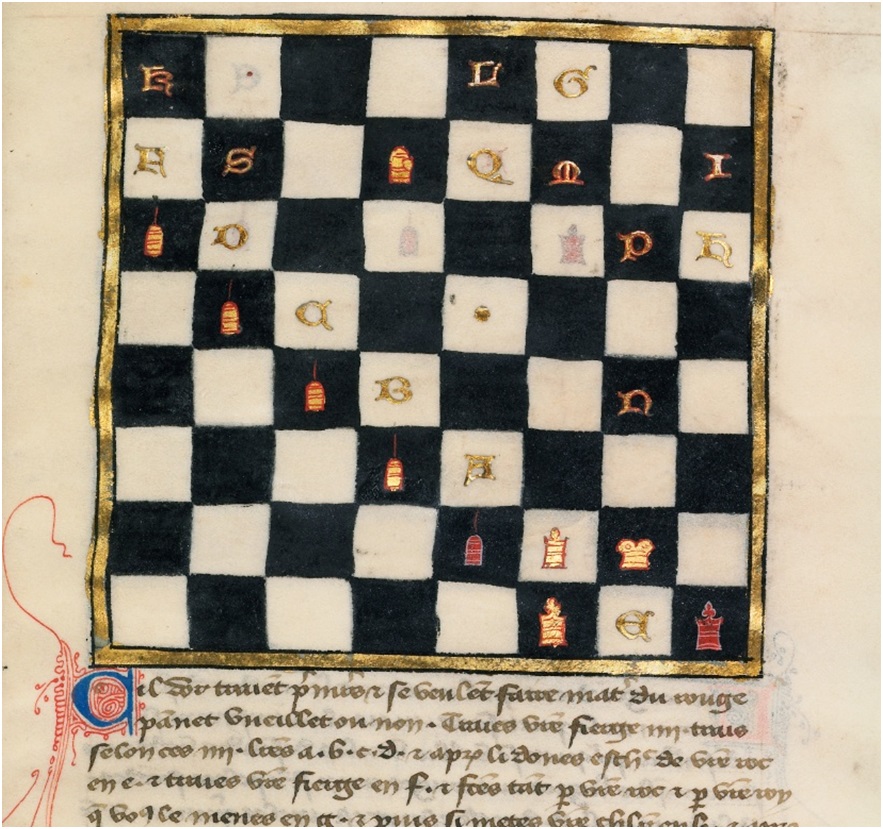
Chess Problem (detail) in Book of Chess Problems, late 14th century. Tempera colors and gold leaf on parchment, 9 ¾ x 6 5/8 in. The J. Paul Getty Museum, Ms. Ludwig XV 15, fol. 97
Medievalists and enthusiasts of the Middle Ages have a love-hate relationship with fantasy lit. Some of us are thrilled to see elements of the medieval world come alive through symbols, plots, settings, costumes, beliefs, and customs that appear in books such as J.R.R. Tolkien’s masterwork The Lord of the Rings. Others are nonplussed, pointing out fake medievalisms and dumbed-down history. George R.R. Martin, the man behind Game of Thrones, likened Tolkien’s themes to “Disneyland Middle Ages” (and those medievalists who have attended the annual conferences in Kalamazoo or Leeds might chuckle to recall the variety of cultural anachronisms and acts of medieval-modern hybridity that come to life during those events).
Both Martin and the writers of the HBO series based on his books have acknowledged that many elements of the plot, characters, power struggles, gender issues, and even religious beliefs and imaginary creatures in Game of Thrones are directly inspired by the Middle Ages and Renaissance in Europe. To illuminate just how strongly medieval imagery permeates Game of Thrones, this season we drew on the Getty’s collection of illuminated manuscripts to find various exciting and surprising links between printed fiction, cinematic still frames, and medieval art.
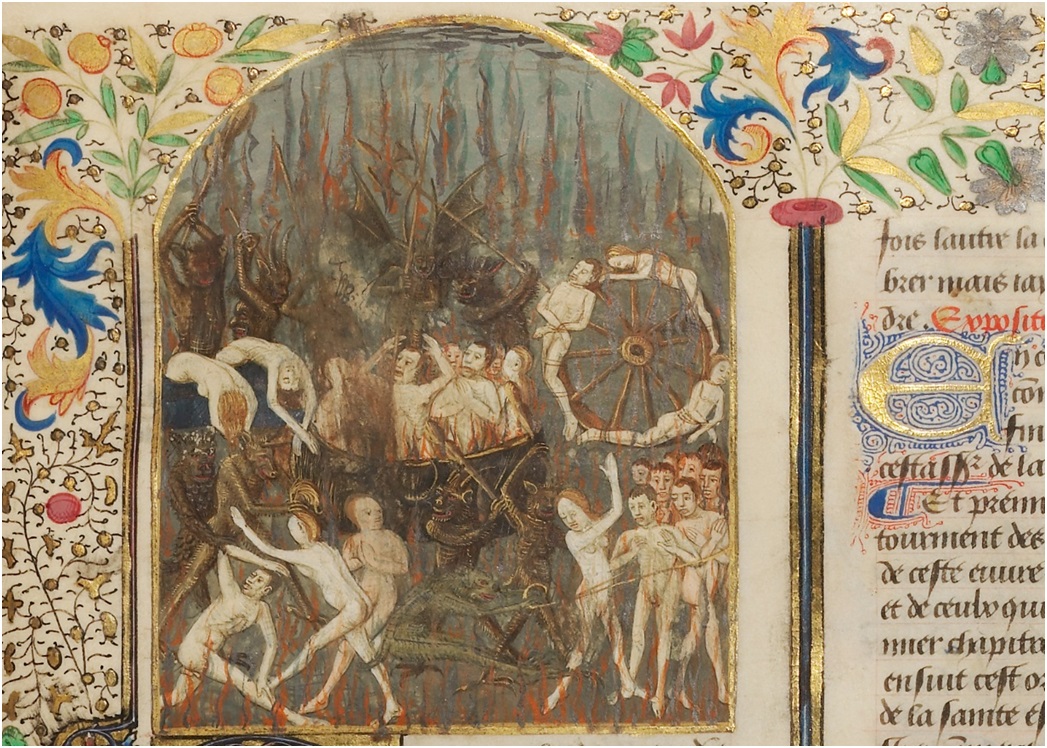
The Torments of Hell (detail) in Saint Augustine’s City of God, about 1440–50, Master of the Oxford Hours. Tempera colors, gold and silver paint on parchment, 14 ¼ x 10 ¾ in. The J. Paul Getty Museum, Ms. Ludwig XI 10, fol. 217
Let’s Watch Episodes 1–10, Again
In the pro-anti medieval-pop debate, we Getty manuscripts curators are definitely in the pro. Each Sunday during season 4, those of us on staff who love the medieval world and its art were thrilled to watch the rise and fall of kings and queens, families and clans in the ongoing conflict that seemed to thrust the numerous characters literally and figuratively “into eternal darkness, into fire and ice,” to borrow words from Dante Alighieri’s Inferno.
Come Monday morning, we related medieval manuscripts to Game of Thrones using social media: here on The Getty Iris and on the Getty Tumblr, as well as Twitter and Facebook. Each week I looked deeply into the manuscripts collection to find thoughtful pairings for the most recent episode. There was no shortage of parallels.
If you haven’t made your way through season 4—or if you’re planning to watch again—here is our compiled list of recaps. No spoilers, we promise!
- Episode 1: “Two Swords”
- Episode 2: “The Lion and the Rose”
- Episode 3: “Breakers of Chains”
- Episode 4: “Oathkeeper”
- Episode 5: “First of His Name”
- Episode 6: “The Laws of Gods and Men”
- Episode 7: “Mockingbird”
- Episode 8: “The Mountain and the Viper”
- Episode 9: “The Watchers on the Wall”
- Episode 10: “The Children”
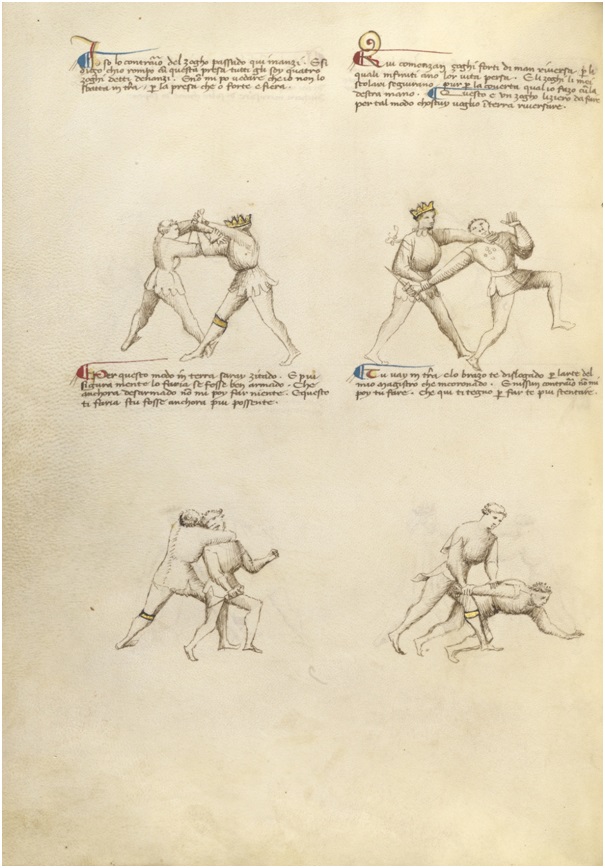
Combat with Dagger in Fiore Furlan dei Liberi da Premariacco, Flower of Battle, about 1410. Tempera colors, gold leaf, silver leaf, and ink on parchment, 11 x 8 1/8 in. The J. Paul Getty Museum, Ms. Ludwig XV 13, fol. 13v
The great Dutch historian Johan Huizinga proposed that every action and event in the Middle Ages was a type of game, with rules, moves, and countermoves that we might think of along the lines of chess. He wrote that “ever since words existed for fighting and playing, men have been wont to call war a game” (Homo Ludens: A Study of the Play Element in Culture). In an unrelated, but equally poignant, segment from Game of Thrones, the cruel and powerful queen Cersei Lannister proclaims to an enemy lord, “When you play the game of thrones, you live or your die. There is no middle ground.” Indeed there is no shortage of winning and losing in images from medieval manuscripts and as acted out in Game of Thrones.
A Digital Exhibition
In all of these efforts, our goal was to digitally curate the collection in meaningful and creative ways, to illuminate the continuing resonance of the medieval past in contemporary culture, and to attract new audiences to that passion we as manuscripts curators devote our lives to—the splendor and beauty of medieval manuscripts.
The majority of the images we shared on social media have never been physically exhibited, since the manuscripts of which they are a part often contain dozens or at times hundreds of images, and in any given exhibition we can show only one particular opening. We also expanded on the visual recaps on Tumblr by explaining how a single medieval illumination related to a theme or moment in the show, from monstrous races to tactics for defeating an enemy by thrusting a sword through the center of his head.

Family mottoes from Getty manuscripts
Given the importance of family sigils (coats of arms) and mottoes in the series, we went one step further and created animated GIFs of a handful of historical families and individuals represented in Getty manuscripts.
Does fantasy lit, such as The Lord of the Rings and Game of Thrones, present a highly subjective window onto the Middle Ages? Of course it does. What fascinates me as a medievalist, manuscripts scholar, and fan of epic fantasy literature is not GoT‘s factual accuracy, or its ability to tell us something about the past that we didn’t already know. What captivates me, and my fellow curators and enthusiasts of manuscripts, is the show’s ability to illuminate how strongly the stories and forms of the European Middle Ages still inhabit our collective past and our visual imagination.

Jacob’s Journey to Egypt (detail) in Rudolf von Ems’ World Chronicle, about 1400-1410. Tempera colors, gold, silver paint, and ink on parchment, 13 3/16 x 9 ¼ in. The J. Paul Getty Museum, Ms. 33, fol. 54
For Next Season
To bring this chapter of Game of Thrones to a close, enjoy a few images from our star manuscripts not featured thus far in our series. We’ll have to wait until next year to see how the pages of Getty manuscripts respond to its continuing saga. In the meantime, be sure to visit the Getty manuscripts exhibition Chivalry in the Middle Ages, on view from July 8 and November 30, 2014, to connect with our medieval past.
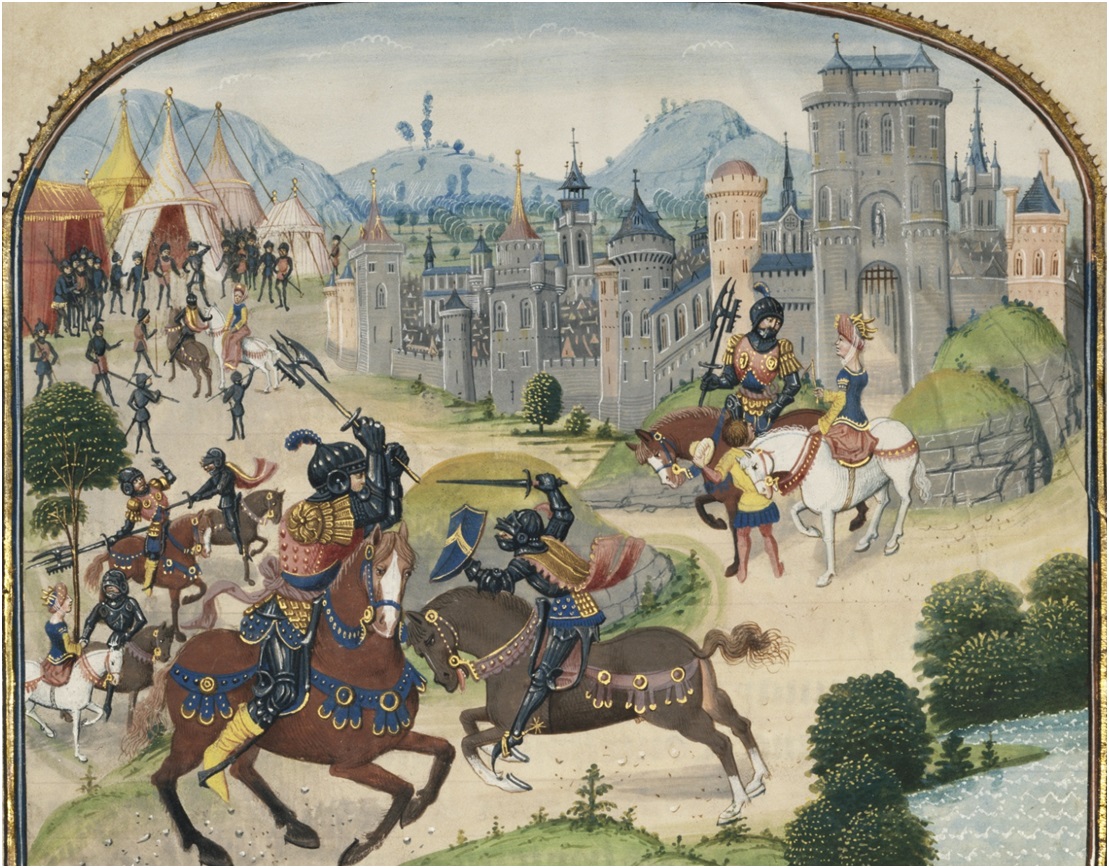
The Abduction of Ydoire in The History of Charles Martel, written 1463–65; illuminated 1467–72, Loyset Liédet and Pol Fruit. Tempera colors, gold leaf, and gold paint on parchment, 9 1/8 x 7 3/8 in. The J. Paul Getty Museum, Ms. Ludwig XIII 6, leaf 1
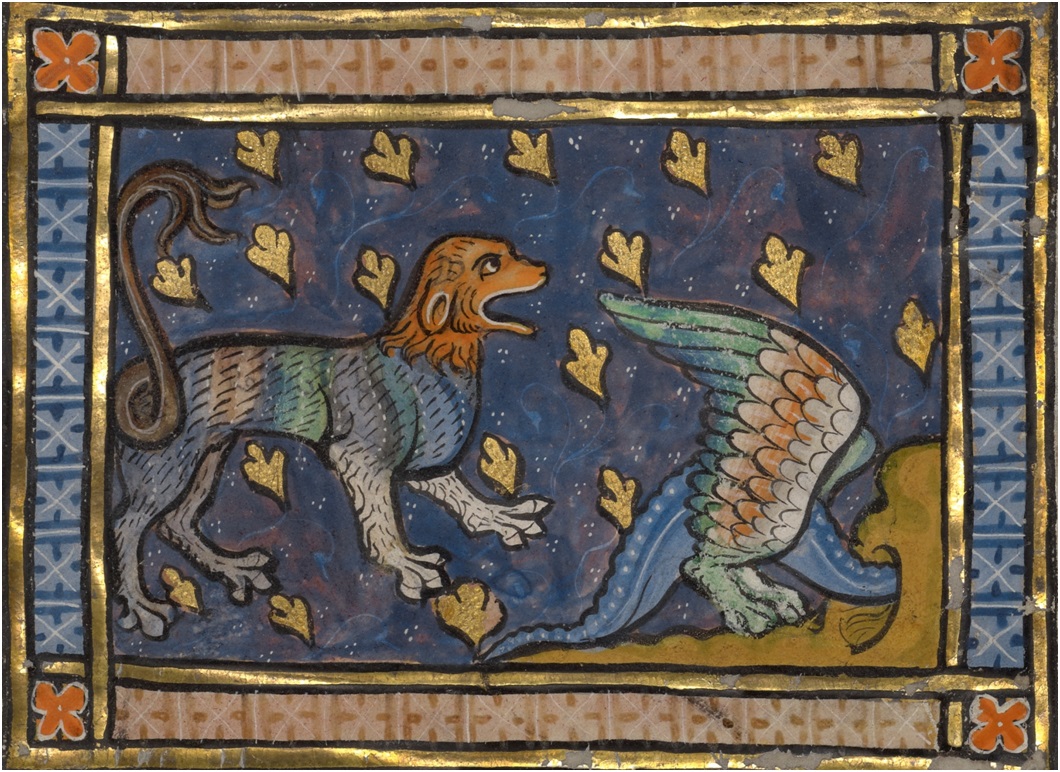
A Dragon Flying over a Panther in a Bestiary, about 1270. Tempera colors, gold leaf, and ink on parchment, 7 1/2 x 5 5/8 in. The J. Paul Getty Museum, Ms. Ludwig XV 3, fol. 88

Initial A: Two Men before a King and A Man Speaking to a Family (detail) in Vidal de Canellas, Michael Lupi de Çandiu, and Michael Lupi de Çandiu, Feudal Customs of Aragon. Tempera colors, gold leaf, and ink on parchment, 14 3/8 x 9 7/16 in. The J. Paul Getty Museum, Ms. Ludwig XIV 6, fol. 97

Nimrod and His Companions Venerating Fire (detail) in Rudolf von Ems, World Chronicle, about 1400–10. Tempera colors, gold, silver paint, and ink on parchment, 13 3/16 x 9 ¼ in. The J. Paul Getty Museum, Ms. 33, fol. 11v



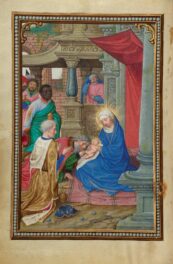
Comments on this post are now closed.